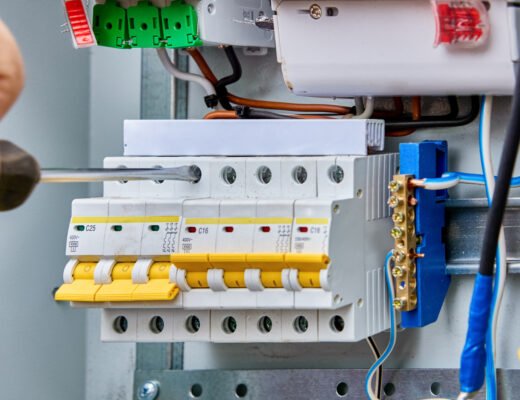Key Takeaways:
- Learn how to minimize your environmental footprint.
- Discover simple changes for a more sustainable lifestyle.
- Explore the benefits of eco-friendly living.
Table of Contents
- Introduction to Eco-Friendly Living
- Energy-Saving Tips
- Reducing Water Use
- Sustainable Materials and Shopping
- Waste Reduction Strategies
- Green Transport Options
- Community Involvement and Impact
- Embracing Technology for Sustainability
Introduction to Eco-Friendly Living
As we strive to decrease our environmental effects, the significance of an eco-friendly lifestyle has increased. Although apartments are sometimes thought of as having little room and resources, they also present exceptional chances to embrace environmentally friendly habits that have a significant impact. Apartment owners can live more sustainably by using various methods, such as reducing trash and using less energy. Embracing an eco-friendly lifestyle helps protect the planet, promotes healthier living, and even saves money in the long run.
Many practical steps exist for residents of Union Station apartments and similar communities to enhance eco-friendly living. Start by incorporating energy-efficient appliances and LED lighting to reduce electricity consumption. Utilize recycling programs and composting to minimize waste and promote a circular economy. Incorporating potted plants into a tiny indoor garden can enhance air quality and bring some greenery into your living area. Residents can take advantage of a green lifestyle and contribute to a more sustainable future by making thoughtful decisions and making the most available resources.
Energy-Saving Tips

The goal of living in a sustainable apartment is to maximize energy efficiency. Changing to LED bulbs is one of the most straightforward changes because they require considerably less energy and last far longer than conventional incandescent bulbs. Using programmable or smart thermostats can also contribute to substantial energy savings, automatically adjusting temperatures when you’re not home to avoid unnecessary heating or cooling. Beyond personal choices, community-wide initiatives such as energy audits and green certifications for buildings can also move the needle towards greater sustainability. An energy-efficient lifestyle reduces fossil fuel consumption, leading to significant cost savings over time.
Reducing Water Use
Water scarcity is becoming a pressing concern worldwide, and thus, water conservation is a critical aspect of eco-friendly living. Apartment residents can curtail their water usage by installing aerators on faucets, choosing drought-resistant plants for home decor, and opting for energy-star-rated dishwashers and washing machines to economize water consumption. Collective efforts, such as rainwater harvesting systems installed by housing communities, can also significantly dent municipal water supply dependency. Each minor adjustment contributes to a sizable collective impact, preserving the precious water resources vital to life on Earth.
Sustainable Materials and Shopping
Our shopping habits and choices can significantly impact the environment. By selecting products made from sustainable, recycled, or upcycled materials, consumers can drive demand for responsible production processes. Whether choosing furniture crafted from reclaimed wood or garments made from organic cotton, every sustainable purchase supports industries that prioritize the planet. Mindful consumption also extends to packaging choices, reducing single-use plastics and opting for items with minimal or biodegradable packaging. A circular economy, in which products are made to be recycled and used again endlessly, is becoming increasingly popular. By embracing these practices and educating themselves on the principles of sustainable materials management, consumers can influence the market toward a more sustainable direction.
Waste Reduction Strategies

The mantra “Reduce, Reuse, Recycle” has never been more pertinent in the journey towards zero waste. Kicking off this effort includes assessing personal consumption patterns—asking whether an item is necessary if it comes in excessive packaging or if there is a reusable alternative. Emphasizing reuse, mending items instead of discarding them, borrowing instead of buying, and supporting thrift and repair shops significantly extend product life. Effective sorting of waste streams is another fundamental practice. Apartment complexes can support this by providing clear, accessible recycling and composting facilities. When waste is adequately separated, it dramatically increases the efficiency of recycling programs and reduces contamination, thus ensuring materials can be turned into new products more effectively.
Green Transport Options
The ways we choose to commute contribute significantly to our carbon footprint. If the distance is short, using the subway, bus, or tram instead of a car can dramatically cut greenhouse gas emissions in urban areas with robust public transportation systems. Walking or cycling is not only a carbon-neutral option but can also lead to increased health and well-being. Another trend in transportation is the rise of electric and hybrid vehicles, which promise cleaner energy and reduced emissions. For those living in urban areas, utilizing car-share programs with electric vehicle options presents an opportunity to experience the benefits of private car use while aligning with sustainability values.
Community Involvement and Impact
Sustainable living thrives in a collaborative environment. Residents can actively contribute to developing an eco-friendly neighborhood by interacting with neighborhood organizations and projects. This includes advocating for community gardens, which supplement the urban landscape with greenery, reap the rewards of home-grown food, and promote a sense of community and shared ownership over local sustainability efforts. Participating in city planning and development meetings also gives residents a voice in creating eco-conscious urban designs. From advocating for bike lanes to supporting local green spaces, involvement in public discourse ensures that sustainability remains a priority in community development.
Embracing Technology for Sustainability
A powerful friend in the fight for sustainability is technology. Innovations such as smart thermostats and IoT-connected devices offer convenience while reducing energy consumption. Apps that facilitate sharing economies, whether through ride-sharing or tool-lending libraries, make it easier to access resources without ownership, reducing material consumption and waste. Green tech isn’t limited to high-tech devices; it also includes solutions like reflective roof paints, which minimize the heat island effect, and water-efficient fixtures that curb water waste. By adopting these technological advances, individuals can move towards a sustainable future, embodying eco-friendly living even within the walls of an apartment.




